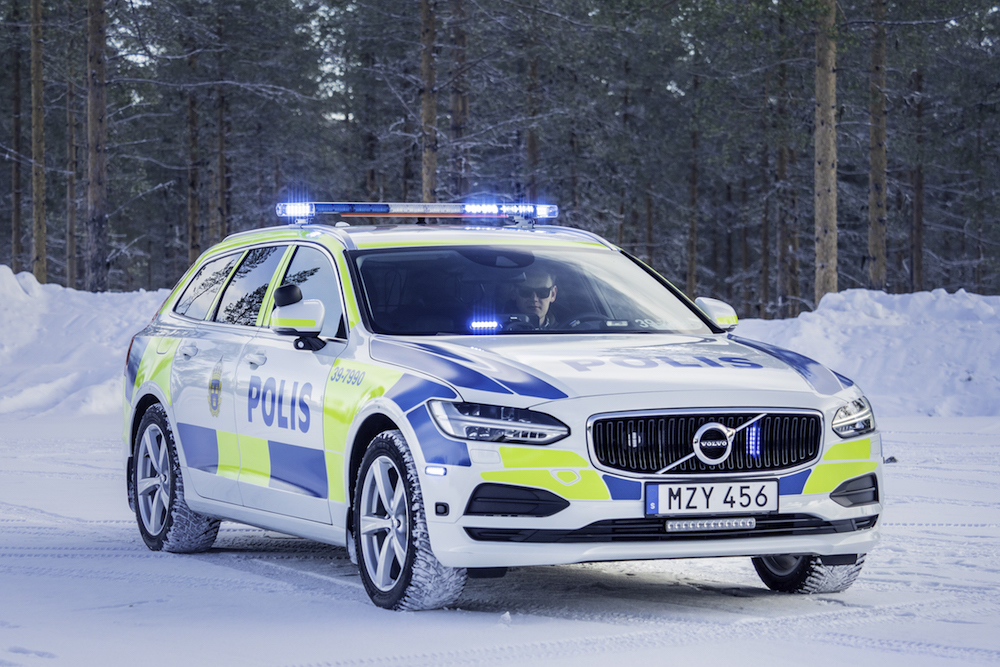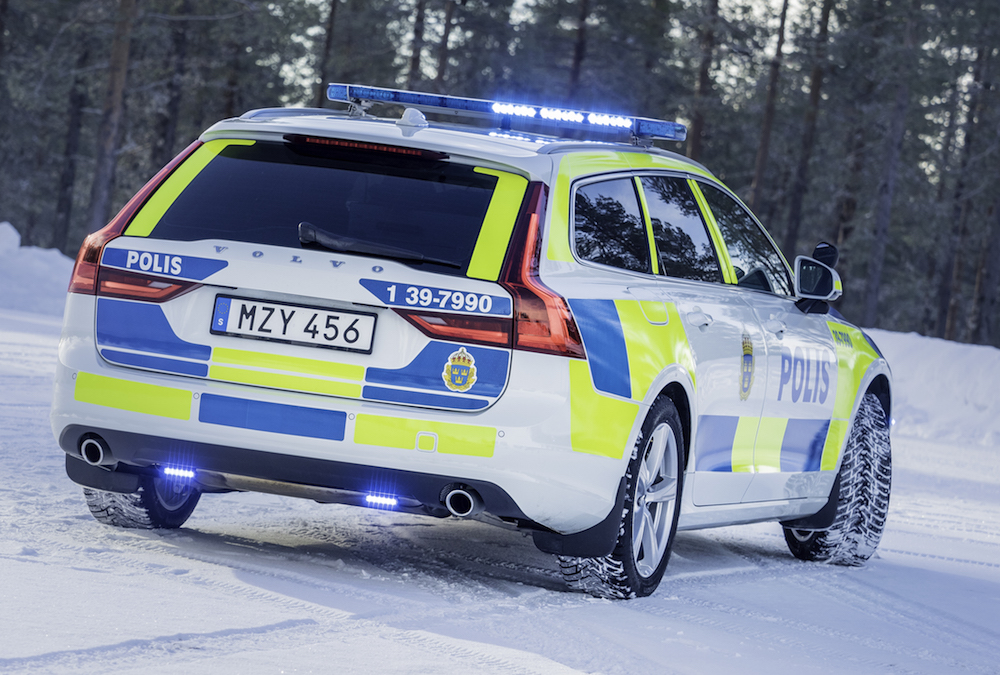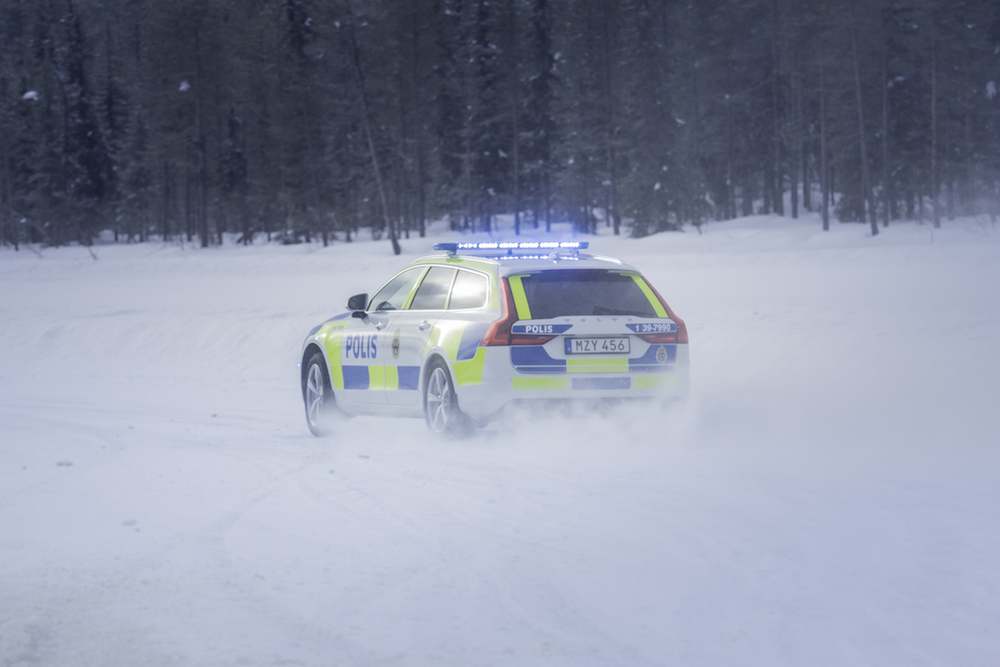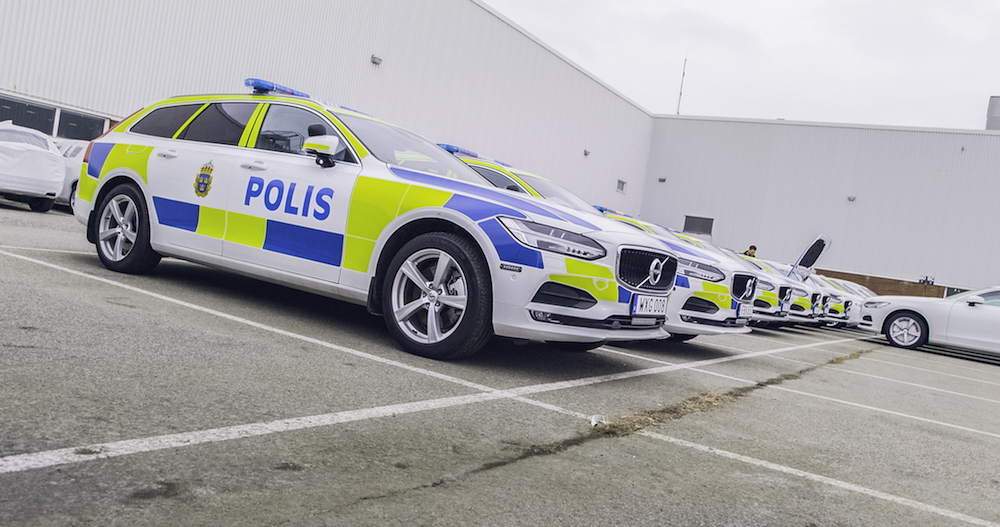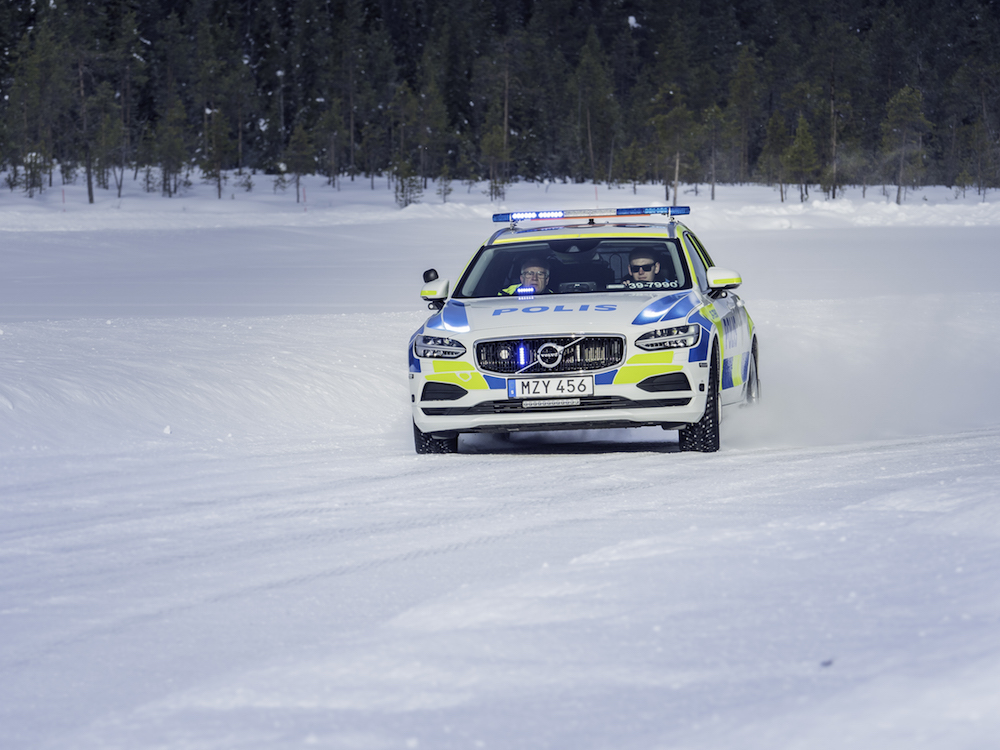" Let's face it. Every one of the nation's finest joined the police force so he or she can speed along on the blue light, breaking as many laws as the neenarr will allow. Come on, you know it's true. But "

Secrets of the new Volvo V90 police car
We go drifting on a frozen lake in Volvo’s new police-spec V90. All in the name of testing, of course...
Volvo police cars have been a common sight on UK motorways since the 1990s. While the 850 was winning a following amongst BTCC fans, traffic officers were being convinced by its practicality, ruggedness and, thanks to its T5 engine, performance.
Today, around 400 Volvo police cars are in operation in the UK. These are predominantly V70s along with a smattering of XC70s (popular in rural areas), plus a few V60s. Of course, the Volvo V70 is no longer in production, having been succeeded by the V90. So what does that mean for the future? The V90 has won over the motoring press since its reveal at last year’s Geneva Motor Show. But are we going to see them in police livery on UK roads?
The answer, Volvo hopes, is ‘yes’. It’s currently working hard to get the V90 on the framework for UK police forces, and testing by Swedish cops has already given the V90 a 9.2 rating out of 10 – higher than any car ever tested.
All Volvo police cars spend around six days passing through Volvo’s special vehicles workshop, located close to its factory in Torslanda, near Gothenburg, in Sweden. Here, they take a standard V90 that’s exactly the same as one sold to a customer and start to process of turning it into a traffic car for the UK police.
Currently, you can only buy a diesel-engined V90 in the UK, so all police cars will be powered by the same 235hp four-cylinder twin-turbo diesel as civilian V90s. You might be surprised to hear the D5 remains completely standard. There are no tweaks under the bonnet to improve performance and aid keeping up with crims – rather, the modifications are more practical.
Traffic officers carry an awful lot of gear to help with them with their job. Cones, ropes, first aid kits, fire extinguishers… you get the idea. And you don’t want all that kit flying around while in a pursuit at three figure speeds – or worse, being rear-ended on the motorway. The answer comes in form of a strengthened, bespoke boot frame that holds everything in place and is designed to send everything out through the rear window in the case of a crash, rather than forward into passengers.
To counteract all that weight (a fully-laden V90 complete with two burley traffic officers weighs as much as 2,400kg), custom springs provide an extra 300mm of ride height, while dampers are around 10-15% stiffer than standard. Wheels are also replaced by those from an XC90.
So how does it drive? We went to Volvo’s top secret test facility in northern Sweden to find out. Here, Volvo test drivers spend around 500 hours putting the V90 police car through its paces, testing it to the limit in well-below-freezing conditions. They’re also tested in hot climates – but the logic is, if they can survive this, a rainy M25 will be a piece of cake.
On a frozen lake in the Arctic Circle (we’re not allowed to tell you exactly where), the V90 is everything you’d want from a police car: swift, safe (all D5s have four-wheel drive as standard) and predictable. There isn’t the same requirement for studded tyres in Blighty, but the V90 provides that feeling of invincibility that UK traffic officers want. Budget cuts mean police forces regularly keep cars for four or five years and expect them to cover several hundred thousand miles before retirement, so the stick they put up with out here is reassuring.
After a thoroughly hard day’s work testing out the V90 on a frozen lake in Sweden, we can confirm not only that it’s well up to the job of carrying out traffic officer duties in the UK, but also that it’ll look incredibly cool doing so.
While nothing will quite top the police-liveried 850 in our eyes, a battenburg V90 comes pretty close.
CLICK TO ENLARGE

